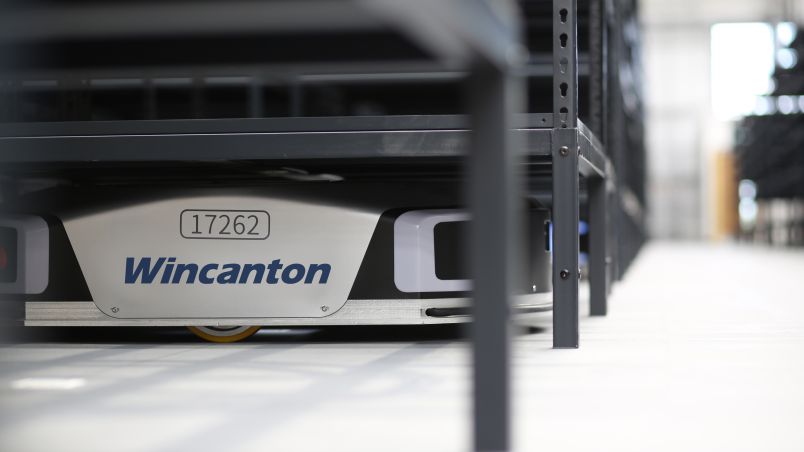
The eCommerce shift has been taking place for some time now, but the COVID-19 pandemic changed the way many of us shopped almost overnight.
We spoke to our Managing Director of Digital & eFulfilment, Paul Durkin, to learn more about the changes retailers are facing, and how they will affect 2021 and beyond.
How can retailers adapt their fulfilment capability to meet surging demand in 2020?
The retailers that have emerged from 2020 in the best shape have been those with mature, online fulfilment channels, able to pivot and scale at pace. Those with ‘bricks and mortar’ orientated models have been forced to rapidly adapt and move more online at great speed.
COVID-19 has required businesses to do things that either weren’t on their roadmaps or were planned to be several years in the making. Deciding on where to prioritise their 2021 investment - either in their direct-to-customer channel, or a combination of this with a store fulfilment role - is at the forefront of their minds.
Businesses with large asset footprints (stores, trade counters, etc.) are now asking themselves how they can use this estate more effectively to service customers. The right solution will vary, but an increasing theme is to leverage this estate (in whole or in part) into micro fulfilment centres. Out of town retail parks provide opportunities for click and collect hubs, a method we’ve seen supermarkets use effectively; while high street stores are well placed to work as returns points, for example.
For Wincanton, these challenges present opportunities. Establishing new fulfilment channels, increasing capacity and enabling store-based customer fulfilment are all live examples of how we’ve supported our clients in the past nine months.
Is automation and robotics the answer?
People are the essence of supply chains; this is something we strongly believe at Wincanton.
One of the big questions the supply chain industry is asking itself is: ‘how can we blend people with being truly digitally and technologically-led?’. Automation and robotics will continue to play an integral role in creating resilience, capacity and improving the cost to serve, yet there have never been more opportunities for people in our industry. The two can, and have to, work in synergy.
At Wincanton, W2 (the company’s innovation programme), cloud fulfilment technology, and robotics and automation are three key areas of focus. For example, through W2 Labs we are working with start-ups to deploy modular robotics that plug into existing warehouse infrastructure and digital twins of facilities to simulate processes and maximise efficiency. In parallel, our digital warehouse platform, oneVASTwarehouse.com, is actively unlocking new value for our clients and the UK marketplace.
The beauty of these initiatives is that they work alongside the people that build trust and power supply chains.
How do the growing issues around sustainability factor into consumer considerations for 2021?
In the COVID-19 era, consumers’ attention has shifted from a focus on speed; which is not always convenience, after all. Many people’s lives and routines have altered through the pandemic, which has changed what good customer experience means.
As ‘now’ isn’t always the priority, being more sustainably aware when it comes to delivery options is increasingly more appealing for everyone. Providing the end customer with a choice and informing them of the sustainability impact of their choice, will become a growing trend.
Consumers are more inclined to choose ‘next week’ if it’s made clear that a vehicle will already be in the area at a set time, which will reduce their own carbon footprint; or to select click and collect from a physical store if the benefits of doing so are made clear, and it is safe to do so. In parallel retailers offering product discounts to select ‘sustainable’ but slower and more cost-effective options to fulfil is a win-win.
Where do you see collaboration heading?
The need for capacity and reducing the cost to serve will be the catalyst for real collaboration.
Many retailers and manufacturers have put a greater focus on collaboration - with clients and even competitors - over the last nine months. We expect more of this to come. Opportunities for collaboration exist in terms of warehouse space, transport fleets and people, and the traditional barriers are breaking down.
It would not be a shock to see an increase in collaboration with an emphasis on final mile delivery, especially in urban environments. Low emissions zones are a challenge that retailers will face over the coming years, and the consolidation of loads is route likely to increase for both home delivery and store-enabled fulfilment.
We’re also seeing a surge in collaborative retail models – ‘stores within a store’, or ‘brands within a brand’. This is shown by B&Q small stores in Asda facilities. This is a more cost-effective model of smart working, providing value from retail spaces and much-needed footfall.
Finally, what are you expecting from 2021?
COVID-19 has accelerated years of development into months, created more localised consumer demand and highlighted resilience as a priority.
The ability to deploy and adapt technology to fulfil the increasingly digitally-enabled consumer will remain relentless. Leveraging the end-to-end supply chain capability will become increasingly important to satisfy consumers and remain commercially viable. Whether this be supplier fulfilment direct-to-consumer, or leveraging store inventory to fulfil locally, agility and customer experience will be key.
Supply chains, in their many guises, are now front and centre in our lives. So, by default, their capabilities are a priority for the Boardroom and the Government alike. Increased investment in supply chains is therefore not just inevitable, but critical for many businesses to adapt and survive 2021 and beyond.




